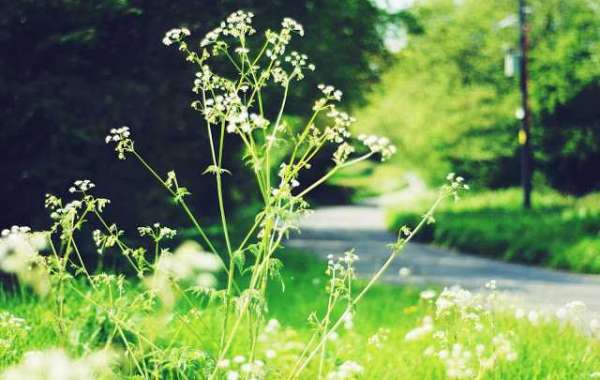Weeds are an important part of the experience of gardening, especially if you are gardening organically. This section is intended to show you pictures of some of the most common garden weeds of the upper Midwest, as well as providing a small amount of information about how to control parti
On the bright side, most gardeners do not really need to worry too much about identifying weeds – if something is coming up from the ground that you didn’t plant, it’s a weed and you can kill it. Unfortunately, there are times when the situation is not quite that simple. You may have planted seeds or bulbs, for example, and not have any idea what the plants that are supposed to grow from them will look like. When the first plants start to grow where you planted the seeds or bulbs, you may not know if they’re “your” plants or weeds. If you have planted a whole row of seeds or bulbs, however, you can usually just wait a while for enough plants to grow big enough that it’s obvious which ones are the uninvited guests. There are also some weeds (quackgrass and Canada thistle, for example) that are very hard to kill, and it can be important to know that you have these if that’s the case. Finally, some people just like to know more about weeds. Many weeds lead interesting lives of their own and have medicinal, culinary, or other useful purposes. Local university extension agents and experienced gardeners can be helpful resources to consult if you have a problem weed and cannot identify it or control it.
Grass weeds and non-grass (broadleaf) weeds
For the purposes of controlling weeds in gardens, weeds can be grouped into two broad categories: grasses and everything else. Most grasses look quite similar, at least when they are young, and gardeners don’t usually grow grasses. This means that almost anything that grows in your garden that looks like a grass is a weed. There are a few exceptions to this simple rule -- sweet corn is actually a grass and can be confused when it is small with many common weeds, and leeks, onions, scallions, and garlic are not grasses but look somewhat like grasses when they are small.
Grasses have narrow, rounded stems with joints at intervals. Their leaves are fairly narrow, and where each leaf meets the stem it wraps around it like a sheath. Grasses tend to have fibrous root systems that hold soil firmly. They are easy to pull out when they are small and very hard to pull out when they are large.
 How To Love Yourself As A Senior Bbw
Durch Christopher Miller
How To Love Yourself As A Senior Bbw
Durch Christopher Miller Jobs That Are Perfect for People Who Like to Work With Their Hands
Durch Kevin Gardner
Jobs That Are Perfect for People Who Like to Work With Their Hands
Durch Kevin Gardner Best canadian pharmaceuticals online
Durch Rosa Smith
Best canadian pharmaceuticals online
Durch Rosa Smith What is the greatest online casino in Canada?
What is the greatest online casino in Canada?
 Mentioned previously in despatches
Durch SEO Consultant
Mentioned previously in despatches
Durch SEO Consultant


